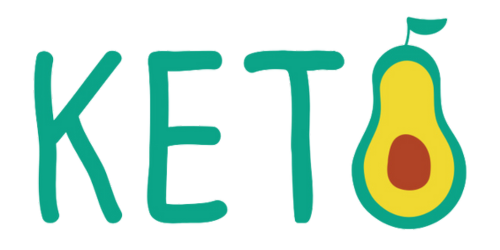Definition
Trans fats are avoided, while monounsaturated fats (found in foods like avocados and olive oil) are emphasized as part of the reproductive diet. Protein from plants should replace that from animals. Improve your diet with a greater variety of high-fibre, low-glycemic-load carbohydrates (including whole grains). There should be more plant-based and less meat-based iron sources.
Origin
The diet was created by Harvard School of Public Health professors Jorge Chavarro and Walter Willett after analyzing data from the Nurses’ Health Study, the most extensive and longest-running study of women’s health in the United States.
How does a fertility diet work?

The fertility diet is not a foolproof method of conceiving a child. However, ten stages in the diet have been shown to improve fertility in women with illnesses including ovulation abnormalities, PCOS, fibroids/uterine polyps, damaged fallopian tubes, endometriosis, and immune system issues.
The diet is not intended to treat male reproductive difficulties, such as low sperm count, sperm abnormalities, twisted spermatic cords, or immunological illnesses.
A growing body of evidence shows that following a fertility diet may help women conceive.
A total of 357 women who had previously used assisted reproductive technologies were included in a 2019 research published in the American Journal of Obstetrics & Gynecology. According to the study’s authors, “greater pretreatment adherence to the (pro-fertility diet) was related to an enhanced likelihood of live birth among women receiving assisted reproductive technologies.”
Concerning Your Health and Fertility:
Women’s fertility increases and men’s sperm quality improves by following a diet compatible with the Dietary Guidelines for Americans (DGA). Whole grains, monounsaturated or polyunsaturated oils, vegetables, fruits, and fish are all highlighted by the DGA, as they are in the Fertility Diet guidelines.
To what extent, however, has the Fertility Diet been studied? Women with ovulatory infertility who adhered to the eating pattern outlined for the Fertility Diet had a 66% lower risk of ovulatory infertility and a 27% reduced risk of infertility from other causes, according to the Nurses’ Health Study, which was published in 2007 by a team of Harvard researchers.
Increased fertility in both sexes has been linked to eating a diet rich in unsaturated fats, whole grains, vegetables, and fish, according to a new narrative review of the scientific data on links between dietary consumption and fertility. High intake of saturated fats and sugar has been linked to lower reproductive results in both women and men. In contrast, the data on the impact of ingesting dairy, alcohol, and caffeine is still inconclusive.
What to eat on a fertility diet?

Foods derived from plants, including whole fruits:
-Seasonal vegetables like tomatoes, potatoes, onions, radish, corn, carrots, cucumbers, broccoli, spinach, cauliflower, lettuce, beans (snap, pinto, baby lima), peas, kohlrabi, eggplant etc.
-Apples, bananas, oranges, strawberries, raspberries, mangoes, guava, and the fertility favourite pineapple are all excellent providers of fibre-rich vitamins and minerals.
-Tofu, seitan, and mycoprotein are all excellent protein options.
-Legumes (beans, lentils, etc.) these inexpensive alternatives, ranging from chickpeas to black beans to traditional red beans, maybe the key to a successful fertility diet on a shoestring budget.
-Why else would you stock up on local seafood like oysters, clams, and whitefish if not for the high concentration of omega-3 fatty acids they contain? Consuming these local specialties is good for the heart and the ovaries. All the entire grains, including oats, brown rice, bulgur, rye, and whole wheat
-Important antioxidants and monounsaturated fats are abundant in raw almonds. You might nibble on some almonds, brazil nuts, or cashews.
-Even though coconut oil initially got a lot of attention, olive oil has shown to be the superior cooking oil.
-Extra virgin olive oil (monounsaturated fat)
What not to eat on a fertility diet?

A list of items that should be avoided or eaten only on rare occasions emerges naturally from the existing data on the ideal reproductive diet. For example:
-Trans fats
-Simple or refined carbohydrates
-Highly-processed foods
-Excessive caffeine intake (more than 500mg per day)
-Alcohol (couples actively trying to get pregnant or to undergo fertility treatment should avoid drinking
alcohol)
To further increase your chances of becoming pregnant, you may also eat
For Women:
-Early in pregnancy, avocados serve an essential function. They include beneficial nutrients, including vitamin K and potassium, making them a good source of fat.
-Protein and fibre found in beans and lentils may help stimulate ovulation.
-Protein, zinc, and folic acid may all be found in high concentrations in quinoa. The infant’s development is supported in this way.
While providing your body with the vital amino acids you’d typically obtain from animal products without the possibly hazardous additives you’d find in meat.
-The egg yolk, which is rich in omega-3s but typically omitted from calorie-conscious diets, is essential for a healthy fertility diet. In addition, they provide folic acid, which is necessary for developing the baby’s blood cells.
-Dairy products like Greek yogurt and cheese include a lot of fat. Still, they provide many health benefits, too, including protein, calcium, probiotics, and vitamin D. These aid in ovulation and achieving a healthy pregnancy.
For Men:
Vitamin E, zinc, folic acid, and selenium are abundant in sunflower seeds, making them useful for sperm motility.
The Fertility Diet is ranked:
#13 in Best Diets Overall,
#36 in Best Fast Weight-Loss Diets
#35 in Best Weight-Loss Diets
#19 in Best Heart-Healthy Diets
#16 in Best Diabetes Diets
#13 in Best Diets for Healthy Eating
#3 in Easiest Diets to Follow
Benefits of fertility diet:
-Plant-based foods are emphasized
-Diet is generally healthy
-Steers clear of trans fats
-Avoids high-sugar foods
Drawbacks of fertility diet:
-Emphasis on full-fat milk products
-Diet requires calorie counting
-Could include too much iron
-May require more meal prep
Conclusion:
The Fertility Diet is an alternative eating plan with many of the same principles as the Dietary Guidelines for Americans (DGA), despite its out-of-the-ordinary name. That is to say, in addition to enhancing general health, eating healthily and being physically active may boost ovulation and, by extension, the likelihood of becoming pregnant. However, remember that this eating plan is predicated on a prospective cohort study, which cannot establish causation. There are numerous potential causes of infertility, and although this diet is designed to treat ovulatory dysfunction, it is essential to note that it is not the only possible solution.
Your primary care physician or obstetrician may send you to a specialist in fertility medicine who can help you sort through your treatment choices if you’re having trouble conceiving.

